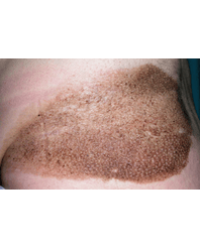
Melanoma Incidence Yesterday and Today - Where are we Going?
Skin cancer is the most common cancer in the United States of America, including melanoma and non-melanoma skin cancer. Malignant melanoma, being ranked as the fifth most common cancer within the US shows a yearly incidence of 73,870 cases and remains the most aggressive form of all skin cancers with a mortality rate of 2.7 per 100,000 [1,2]. Fortunately, over the last decade melanoma treatment options have tremendously improved. Progress in areas such as immunotherapy and targeted therapies has lead to increased melanoma survival rates, rising from 82% (1975-1977) to 93% (2004-2010) [3]. In consequence, the cost of skin cancer treatments, specifically for melanoma treatments increased from an average annual total cost of $864 million in 2002 to $3349 million in 2011 [4].
Yusuke Suita and Elisabeth M Roider*


